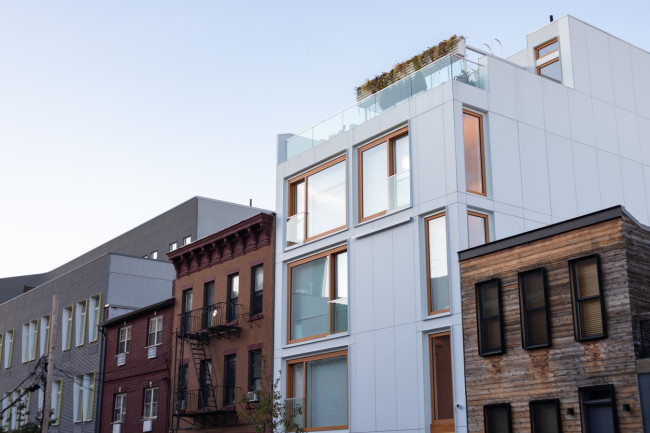What are mortgage points and how do they lower your interest rate?

By making a one-time payment at the closing table, you reduce your monthly mortgage costs—but there are some important considerations to weigh.
iStock
When you use financing to buy a house or apartment, your monthly mortgage payments are determined by several factors that include your interest rate—but the rate you’re offered is not always the final word.
If you happen to have some extra cash (lucky you) or are getting some kind of closing credit, one of the ways to lower the cost of borrowing is to buy mortgage points—also known as “buying down the rate,” “prepaid interest,” or “discount points.”
“The goal is to get the lowest rate and lowest fee possible,” says Eli Sklar, a senior loan consultant at LoanDepot. “Sometimes the lowest rate is not available unless you pay upfront to lower the rate for the life of loan,” he says.
How the math works: One point costs 1 percent of your mortgage amount, or $1,000 for every $100,000. So one point on a $400,000 mortgage would cost $4,000. By making a single, one-time payment at the closing table, qualified applicants can permanently reduce their monthly payments every month, Sklar explains.
Buying a point typically lowers the interest rate on your mortgage by up to 0.25 percent. If you have a rate of 3 percent and are willing to pay one point, you would lower the rate on a 30-year mortgage to 2.75 percent for the life of the loan, cutting your payments each month from $1,686 to $1,633, a savings of $53 dollars each month.
Does paying for points make sense?
To determine if it's worthwhile to pay for points, consider how long it takes to break even, and how much is being saved over life of the loan after that point, Sklar says.
“In this case, $4,000 in costs divided by $53 in monthly benefit tells us that this buydown pays for itself roughly in the first six and a half years for a 30-year loan. In the remaining 23 years, the homeowner would recoup over $15,000 in interest charges,” he says.
“It is up to the homeowners to decide what makes sense for them. Especially in New York City, where the average length of time that a buyer keeps a mortgage is about seven years, this can definitely change the equation.” Sklar says.
Life happens: Jobs change, children grow up and out of schools. As a buyer you might think you’re going to stay in a property for a long time but end up changing course—and that’s an important consideration when paying for points.
“When looking to pay points on your loan you need to really look to see how much of a savings you are going to gain versus how long it will take you to recapture that savings over time. If paying a point on your loan, will it take you two to three years before you start to regain that money you paid upfront? If so, do you plan to stay in the home that long? If not, paying the points may not be the best option for you,” says Brittney Baldwin, a vice president at National Cooperative Bank (a Brick Underground sponsor).
“Having a discussion with your lender and going over your options and your plan for your home will be the best way for you to decide that is best for your transaction,” she says.
An important consideration in NYC for buyers is having enough to pay your closing costs, including taxes, attorney fee, title insurance and more. In addition, co-op buildings can have steep requirements for post-closing liquidity. Some buildings want to see a year’s worth of mortgage and maintenance in an escrow account, some may want to see up to two years. In other words, you don’t want to spread yourself too thin.
Using part of a closing credit to lower your rate
Some NYC buyers like to buy points for bragging rights, says Kevin Leibowitz, president and owner of Grayton Mortgage, but a more practical application is to use some of your closing credits—which is money from the seller at the closing table that some buyers are offered—to buy down the rate.
One common scenario: You’re buying a place that needs repairs or new kitchen appliances. A seller who isn’t interested in putting in new appliances themselves might offer you a credit to pick out new appliances—that credit could be applied instead to lowering the rate.
Leibowitz says some credits are substantial. He worked on a deal for a Bed Stuy brownstone that had problems with a structural beam. The seller had no interest in fixing the beam, and instead offered a $30,000 credit—which was used in part to lower the rate by paying points.
Buying points when you refinance
There are fees associated with refinancing that should be part of your calculations. There are charges for underwriting (about $1,000) and the appraisal (about $500). For owners looking to buy points when they refinance, the math looks a little worse on a smaller mortgage, Leibowitz says.
“Your ability to break even is skewed by the fixed costs, and then the larger loan balance is more of a factor,” he says.
It’s all about which makes more sense to you: Having cash now vs. savings later, he says.
“I’m of the opinion that the first shot for your mortgage rate is your best shot. If the breakeven indicates that the cash now will be recouped quickly, in two to five years, then it would make sense. If it takes 10 years to break even, then the economics are much worse.”
You Might Also Like





























